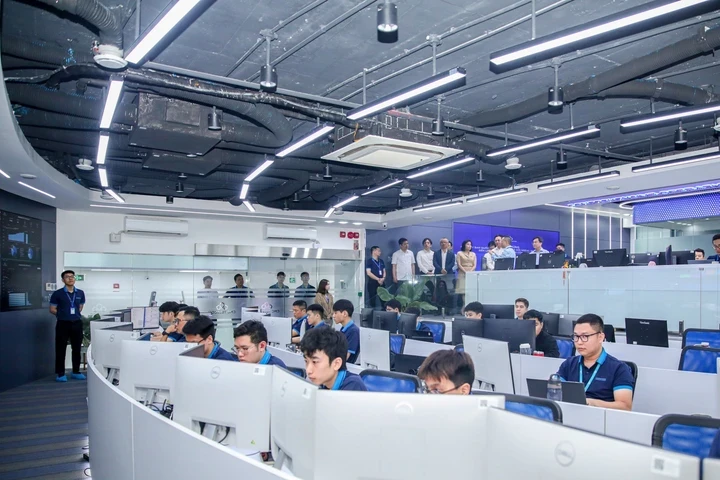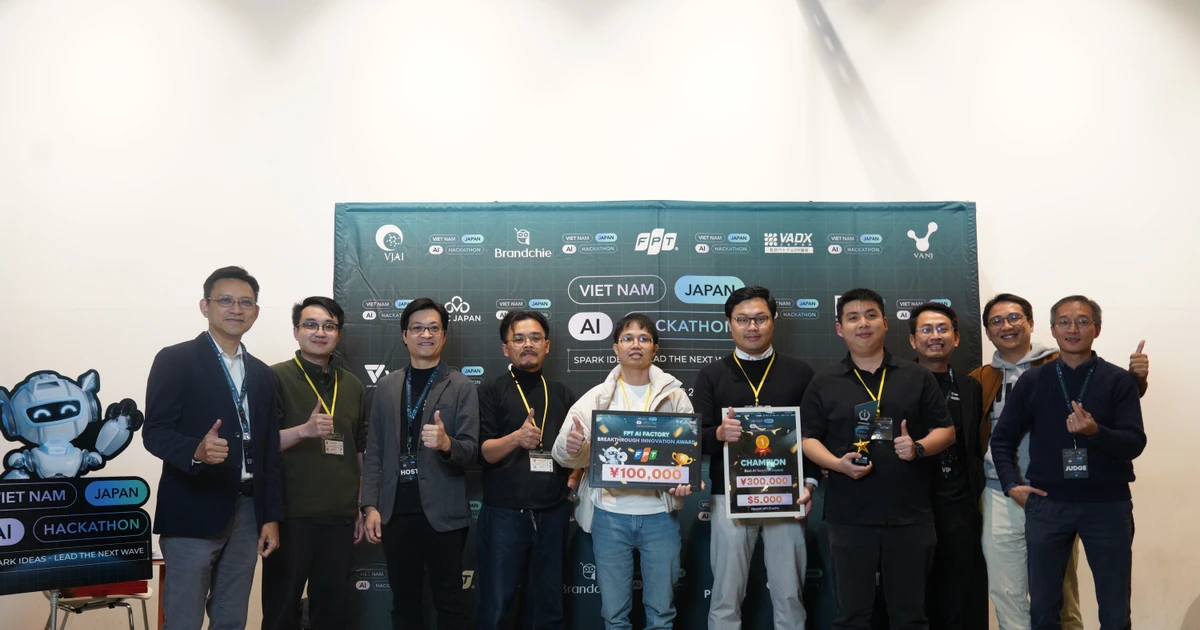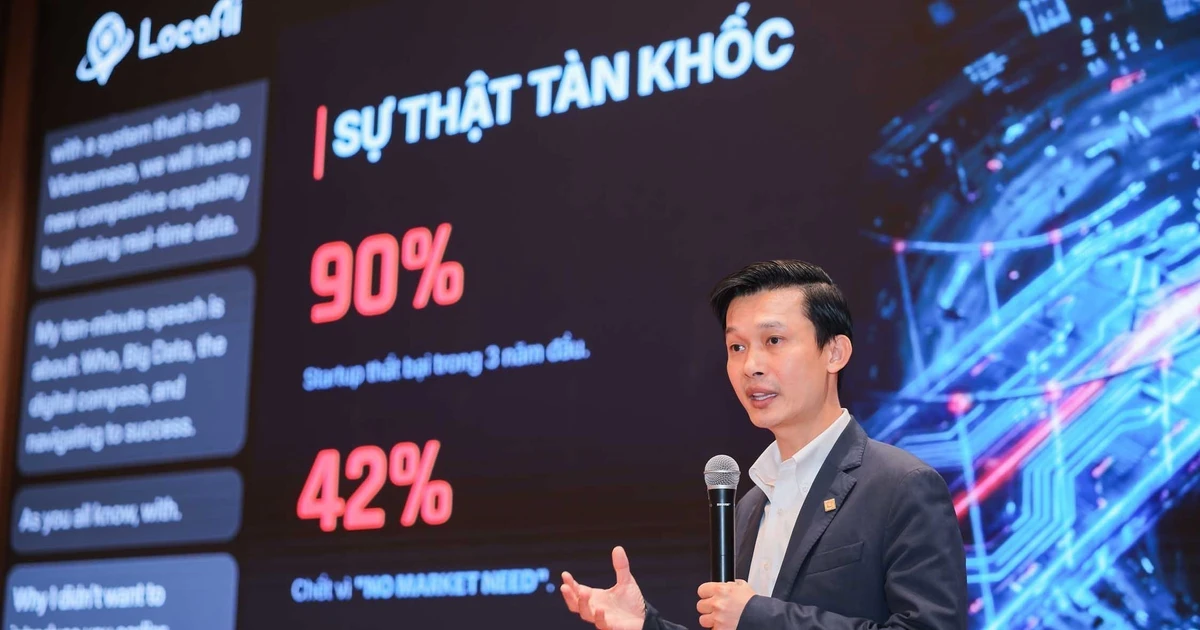Focusing on key sectors
The Law on Digital Technology Industry, with its many new mechanisms and policy innovations, is widely regarded as a breakthrough that will help Viet Nam build key digital technology sectors. According to Nguyen Khac Lich, Director of the Information Technology Industry Department under the Ministry of Science and Technology, the law comprehensively regulates the digital technology industry, semiconductor, AI, and digital asset sectors, creating a unified and consistent legal foundation for developing cutting-edge digital technologies.
Importantly, this legislation codifies the “Make in Viet Nam” programme, prioritising the use of Vietnamese-made digital technology products in State-budget-funded projects to ensure stable output market.
Start-ups are offered support including financial assistance for purchasing technology, developing prototypes, and promoting products in international markets. Foreign direct investment (FDI) enterprises are encouraged to transfer technology, collaborate with Vietnamese digital tech companies, and improve their production capacities and global competitiveness.
Commenting on the law’s innovative features, Dr Cao Anh Tuan, CEO of Genetica, explained that previously, tech companies often operated independently, each focusing on its own strengths, leading to an industry landscape resembling “a hedgehog,” where every part bristled with isolated efforts. Now, with the law, specific priority sectors have been identified, such as AI, semiconductors, green technology, and green transition, bringing much-needed focus.
“This allows Viet Nam’s entire tech community to operate with far greater focus. Companies now have more confidence to invest in areas identified as national priorities because they know they will receive additional resources and benefit from more favourable policies, encouraging them to boldly invest,” Dr Tuan shared.
The Genetica CEO also praised the controlled trial mechanism set out in the new regulation. As a Vietnamese intellectual who returned from the US to launch a start-up, Dr Tuan believes that the most crucial factor for retaining entrepreneurs and tech talent is the regulatory environment. Bringing a product to market after research and development requires a lot of time for testing, then regulatory barriers and standards..
“In the US or Singapore, sandbox testing mechanisms have been applied for years. For the first time, Viet Nam’s Digital Technology Industry Law legally introduces a sandbox framework, opening enormous opportunities for businesses. A sandbox doesn’t just help develop better technologies, it also accelerates their delivery to users,” Dr Tuan observed.
A robust digital start-up ecosystem
Experts affirm that one of the law’s standout features is that it introduces superior mechanisms to stimulate the digital start-up ecosystem, aiming to position Viet Nam as a leading digital economy nation. The regulation is also expected to serve as a crucial institutional lever, empowering Vietnamese digital technology enterprises to expand internationally, increase revenues, and establish their brands on the global stage.
According to Do Tien Thinh, Deputy Director of the National Innovation Centre (NIC), the legislation promotes the innovation ecosystem through three main aspects: reducing administrative procedures, providing clear and specific support, and — importantly — ensuring that such support is effectively implemented in practice.
“Never before has Viet Nam’s technology sector enjoyed such clear and tangible advantages. In the past, there were preferential policies for start-ups, but most resources were very difficult to access. With this law, we expect support mechanisms to be implemented more practically and effectively,” Thinh remarked.
For MedCAT, an AI-focused start-up, the Digital Technology Industry Law has brought new hope.
“The law has designated AI as one of the focus sectors. Viet Nam is following the global trend of recognising AI as an opportunity for development. Start-ups are receiving significant opportunities from sponsors and partnering organisations,” said Dang Thi Anh Tuyet, CEO of MedCAT.
According to Tuyet, just six months ago, MedCAT had little chance to participate in projects related to digital transformation or national data initiatives. However, today, the company sees very clear opportunities.
“Requirements for building data infrastructures have become increasingly detailed, and AI strategies are now directed from the central government down to local levels. Our products have already been put into trial application within government agencies. This represents a major leap forward for a start-up like ours,” Tuyet shared.
Nguyen Khac Lich emphasised that one of the law’s groundbreaking features is its exceptional range of incentives for enterprises.
First, any enterprise involved in producing digital technology products or services will enjoy a two-year corporate income tax exemption and a three-year land rent exemption.
Second, for priority sectors such as key digital technology products, semiconductors, AI, and high-performance computing (HPC), or investment in concentrated digital technology zones, companies will benefit from a preferential corporate income tax rate of 10% for 15 years, plus a four-year tax exemption and a 50% reduction over the following nine years. They will also enjoy land rent exemptions for 11 years, potentially extending to 15 years if projects are located in especially disadvantaged areas.
Third, for large-scale projects with a total investment of 6 trillion VND or more in key digital technology products, semiconductors, AI, or HPC, investors will receive incentives equivalent to those applied to 30 trillion VND projects under Vietnamese law.
Specifically, they will benefit from a 5% corporate income tax rate for an impressive 37 years, six years of tax exemption, and a 50% reduction over the following 13 years. Regarding land and water surface leases, such projects will be fully exempt for 22 years, with a 75% reduction for the remaining time. These are extraordinary incentives designed to attract investment into strategic national digital technology sectors.
Beyond corporate incentives, the State places special emphasis on developing a skilled workforce for the digital technology industry. Students in relevant fields will benefit from policies including credit incentives, favourable student loan interest rates, academic scholarships, social allowances, and tuition waivers or reductions. Additionally, the government will support the costs of training high-quality digital technology personnel, invest in educational infrastructure, and provide financial assistance for companies participating in student training or workforce development to meet practical needs.
With the goal of establishing 150,000 digital technology enterprises by 2035, the Digital Technology Industry Law lays the foundation for building a strong, resilient technological ecosystem and advancing the development of human resources.
















